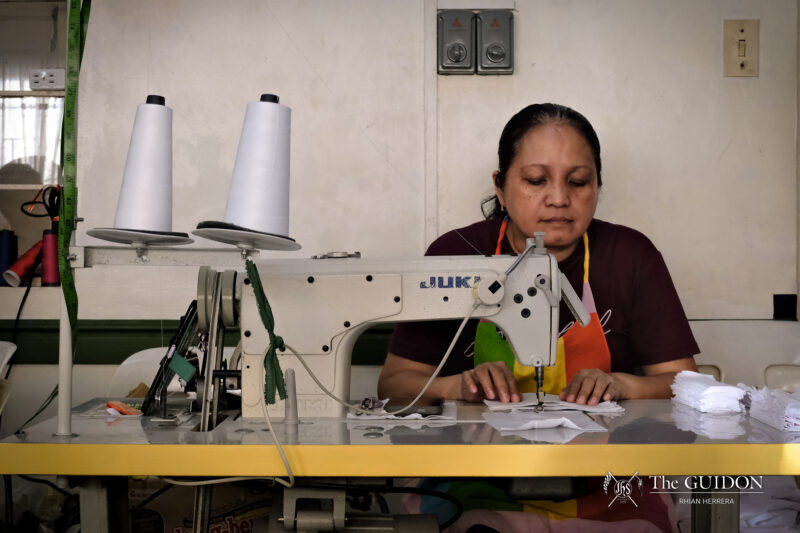FROM INSTAGRAM influencers and vloggers to video game streamers, internet personalities have shaped pop culture. As stories of people attaining fame and career through streaming platforms circulate, becoming a YouTuber now graces the list of desired careers. With the rise of career options in streaming, the digital era ushers in the birth of Virtual Youtubers (VTubers)—animated 2D or 3D characters brought to life by the human voices behind them.
Animated roles
2020 has seen VTubers expand into a global trend. At the root of Virtual YouTubing is Kizuna Ai, a 2D anime-style model who first coined the term. In just four years, she has amassed over 2 million subscribers and expanded her platform to include brand deals and commercial appearances, eventually leading to a successful career.
While the use of anonymous avatars in anime-style designs are characteristic of Japanese pop culture, the surge in VTuber popularity has led to the globalization of the Virtual YouTube community.
In the Philippines, several VTubers have risen to success. Lyrica, a 69-year old retired magical girl, has garnered over 36,000 subscribers since her debut in June. Sharing the YouTube spotlight with 35,000 subscribers, Kaheru Orange is famous for her virtual trashcan home. Kisaragi Sekai, who debuted in March of this year, shows off his magic-casting abilities to 1,300 Twitch followers alongside his group, Pandemonium.
These characters’ charm lies in their quirky authenticity and ability to entertain despite their avatar masks. Joshua Banguilan, a first year BS Biology student from University of the Philippines Diliman and a fan of VTubers since 2016, affirms this. “They’re very similar to actual streamers you’ll find on Twitch. They’ll play games, chat, talk about things,” he says.
Behind their anonymous characters, VTubers can express themselves and their talents without fear of judgment. “It is an extension of myself that I couldn’t really show to others. […] You can express your [creativity] and your talents through streaming,” Lyrica highlights.
Live support
With the rising popularity of VTubers, VTubing technology has become more accessible. Despite all this being made available, however, a successful stream still requires careful preparation.
“What a lot of people don’t know is: There’s a lot of hardware and software required for tracking with models,” Sekai says. “You need a decent camera that can record 60 FPS (frames per second), you have to prepare the characters, make them responsive and fine-tune them, set your stream overlays, et cetera.”
Since VTubers design a persona complete with personality traits, background stories, and mannerisms, there is much work put into staying in character. In fact, Kaheru admits that she first started streaming as someone completely different from her true personality, but eventually became more comfortable with being her true self.
Sekai also shares in keeping his VTuber and personal identities separate, revealing that not many of his friends know of his VTuber activities. “We don’t want people who know us to know that we’re doing this because, I guess, it’s kinda embarrassing,” he admits. While he has also grown to be more comfortable in acting naturally, he still tries to avoid “breaking the fourth wall,” especially since Pandemonium has a concept and universe to maintain.
As their popularity rises, the struggles they face also become apparent. Lyrica, who tries to maintain a regular streaming schedule on both Twitch and YouTube, admits that it is a struggle for her to sleep properly sometimes. For someone who became a VTuber when the global audience may not have been as receptive, Kaheru sometimes has to deal with discouraging comments that put down Filipino VTubers.
From setup to planning, and the way one presents themselves on stream, VTubers are immersed in taxing work. However, at the end of the day, the community motivates Kaheru, Lyrica, and Sekai to continue their journey as content creators.
Beyond pixels
Despite struggles, the joy of entertaining others keeps VTubers going. “By streaming, I can still see people happy, and their reactions make me happy as well,” Kaheru says.
As if through reciprocation, VTubers also provide a safe space for fans, and the growing trend invites acceptance into what can be a misunderstood niche. “When I started watching VTubers, I felt ashamed at first,” Sam Arnaldo (5 AB IS), a fan of VTubers, confesses.
However, as she met other fans, she began to take comfort in VTubers and their communities. “VTubers provide a certain comfort to me. They remind me to just relax, to just sit down rather than stress out over other things,” she reflects.
As VTubers and their community continue to grow, many more will turn their passion for streaming into careers. The innovation they have brought forth marks the beginning of a new era of streaming. It extends beyond the confines of identity, where streamers are free to be perceived as a character of their design. VTubers have developed a trend set for growth, and the possibilities are endless.







